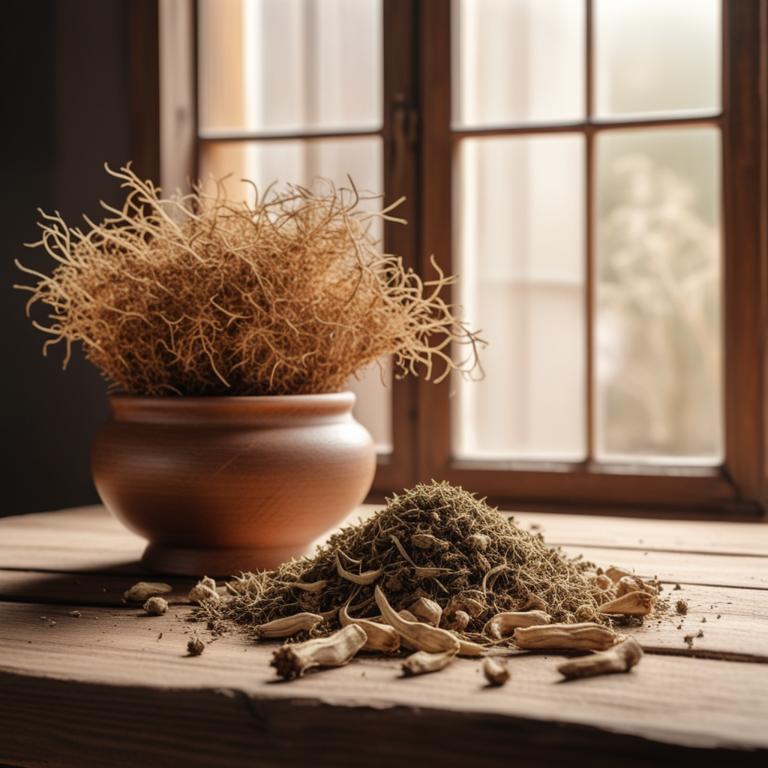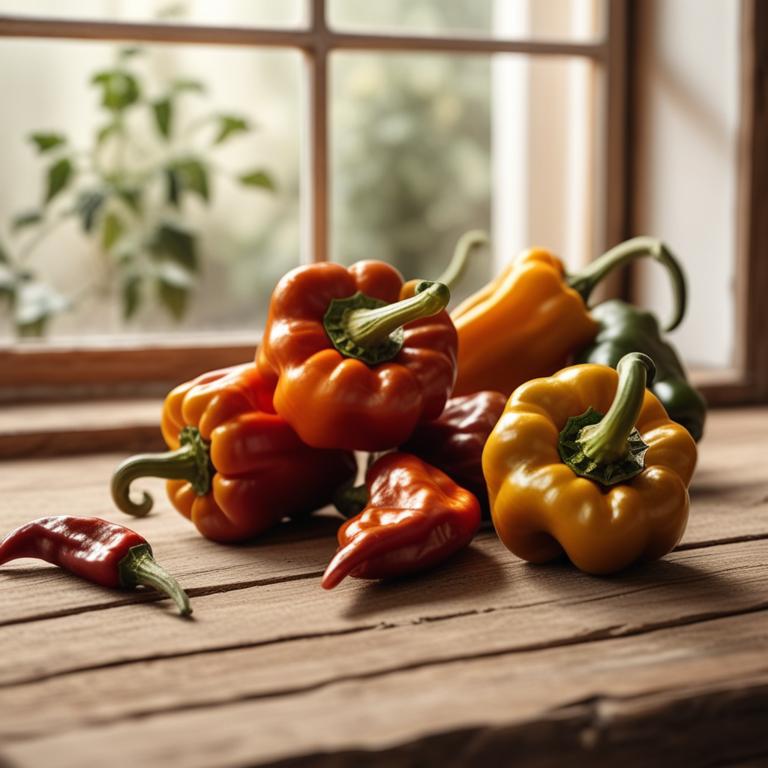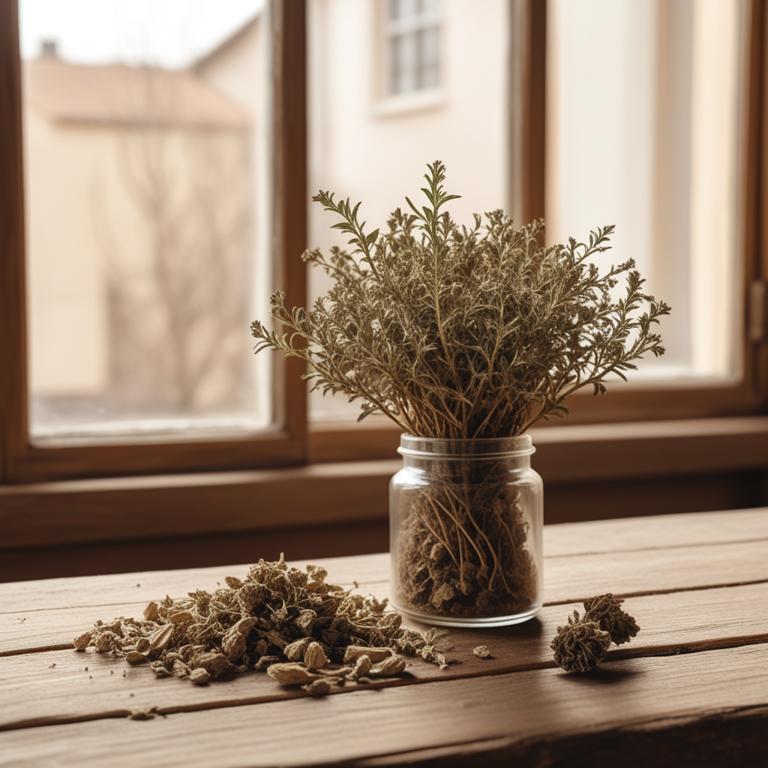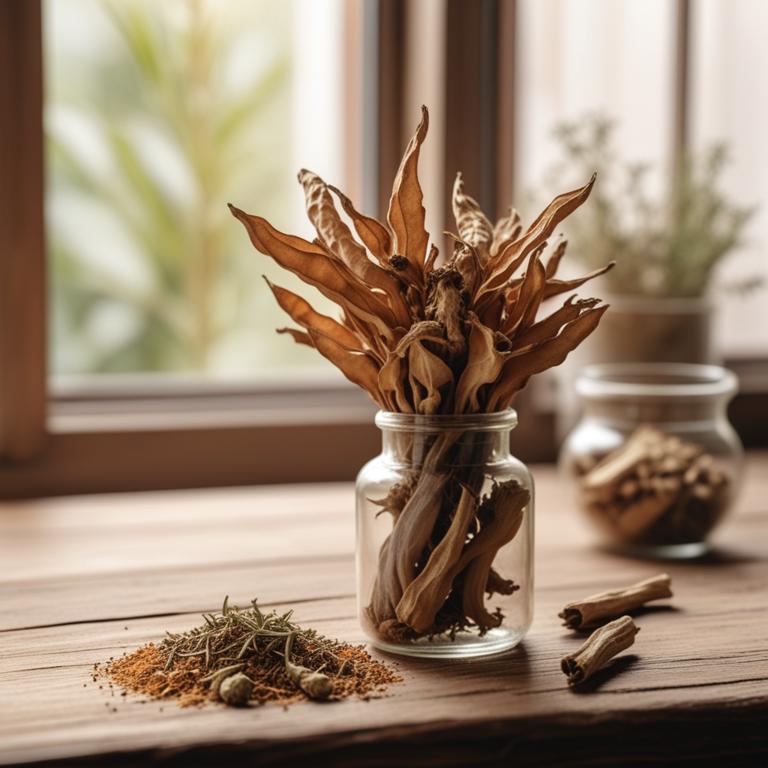Updated: Nov 30, 2024
7 Herbal Creams For Back Pain
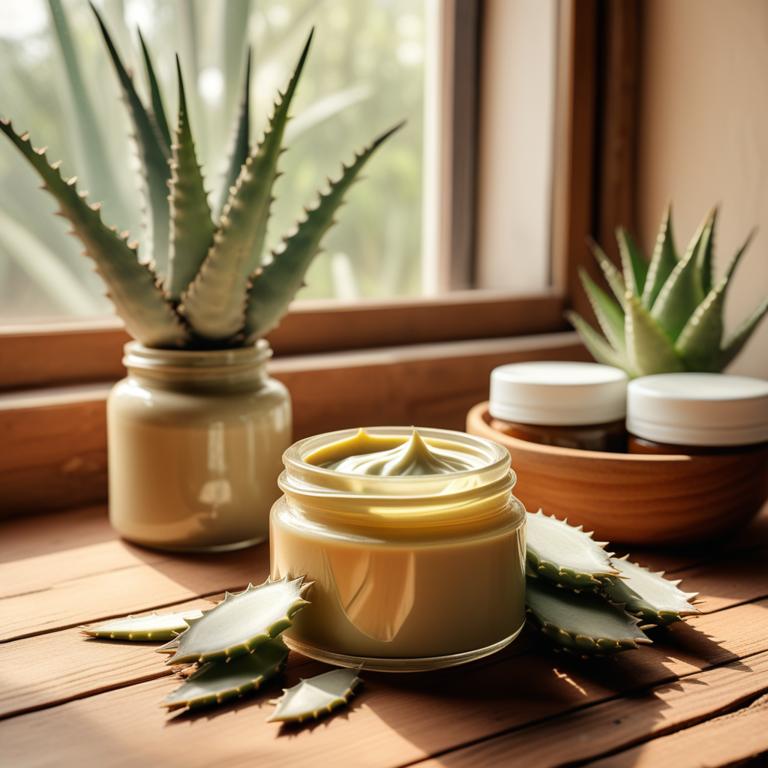
Herbal creams can be a great way to relieve back pain.
These creams typically contain extracts from plants like ginger (Zingiber officinale), turmeric (Curcuma longa), and cayenne pepper (Capsicum annuum). The active compounds in these herbs, such as gingerol and curcumin, have anti-inflammatory properties that help reduce pain and swelling in the muscles and joints. When applied topically, these herbal extracts can penetrate deep into the skin and reach the affected areas, providing targeted relief from back pain.
The anti-inflammatory properties of these herbs can also help reduce muscle spasms and stiffness, making it easier to move around and perform daily activities. Using herbal creams for back pain can bring several benefits to your life. For one, they can reduce your reliance on over-the-counter pain medications, which can have side effects like stomach upset and drowsiness. Additionally, herbal creams are often more gentle on the skin than traditional pain creams, making them a good option for people with sensitive skin.
They can also be applied as needed, providing quick relief from back pain without the need for repeated doses.
This article explains in detail what are the best herbal teas for back pain and wh.
Also, you may be interested in...
Today Free Bonus!
The Ultimate Herb Drying Checklist
(For Long-Lasting Powerful Medicinal Effect)
How to easily dry herbs that don't mold and that keep their strong medicinal power for more than 1 year.
Table of Contents
1. Zingiber officinale
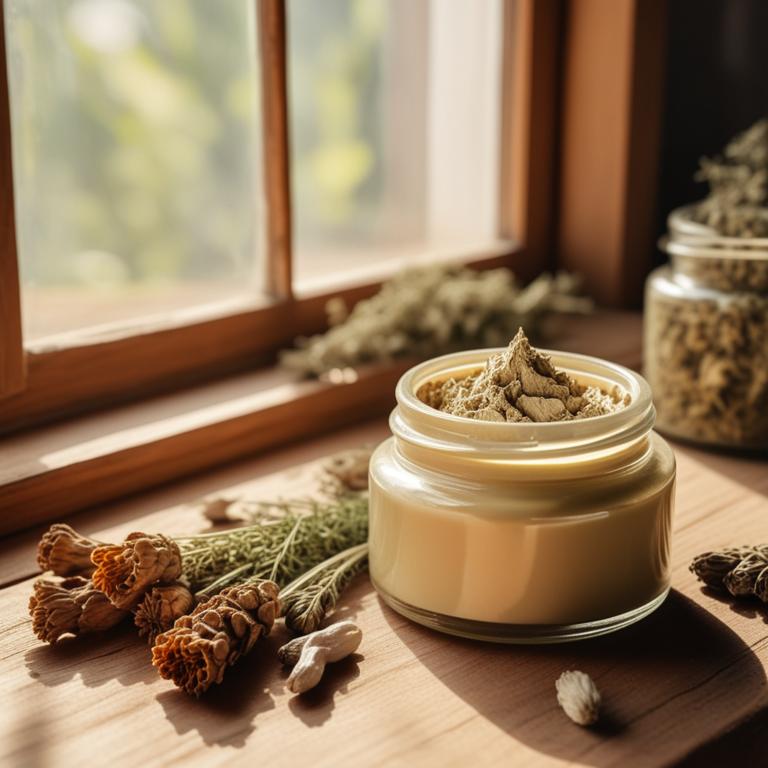
Zingiber officinale creams contains bioactive compounds like gingerol and shogaol, which have anti-inflammatory properties.
These compounds help reduce pain and swelling in the body, making them effective in alleviating back pain. The anti-inflammatory and analgesic properties of gingerol and shogaol work together to block the production of pain-causing chemicals in the body. This reduction in pain-causing chemicals leads to a decrease in back pain and discomfort.
The anti-inflammatory properties also help reduce inflammation in the muscles and joints, further relieving back pain.
- Gather 1 cup of coconut oil, 2 tablespoons of beeswax, 2 tablespoons of shea butter, and 2 tablespoons of Zingiber officinale essential oil.
- Melt the coconut oil and beeswax in a double boiler or a microwave-safe bowl in 10-second increments, stirring between each interval, until smooth.
- Add the shea butter and stir until it's fully incorporated and the mixture is smooth.
- Remove the mixture from heat and stir in the Zingiber officinale essential oil.
- Pour the mixture into a container and let it cool and solidify before applying it to the affected area for back pain relief.
2. Curcuma longa
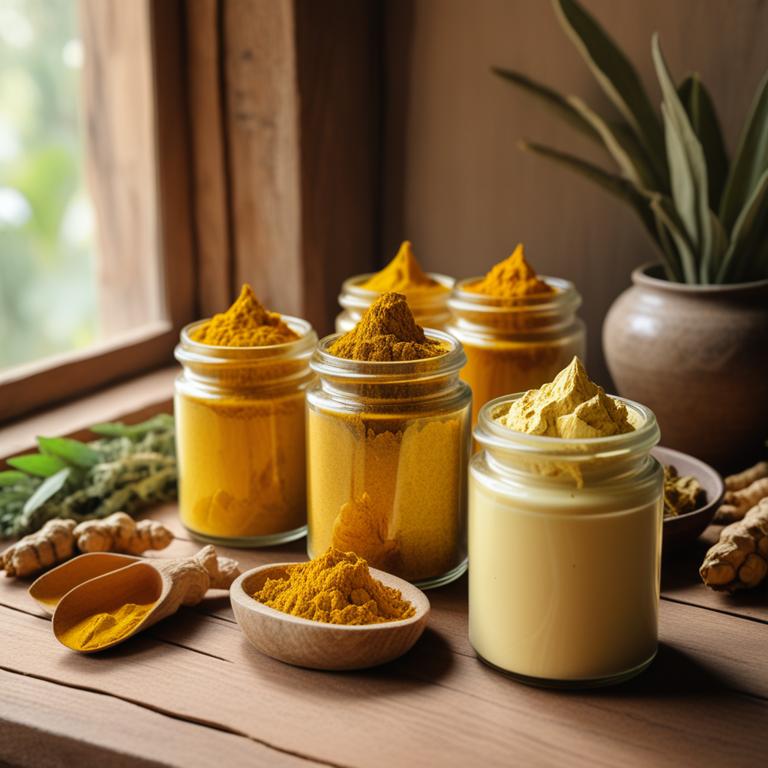
Curcuma longa creams contains bioactive constituents like curcumin, demethoxycurcumin, and bisdemethoxycurcumin, which have anti-inflammatory and antioxidant properties.
These compounds reduce inflammation and pain by inhibiting the production of pro-inflammatory enzymes and chemicals. Curcuma longa creams also contain turmerone, which has anti-inflammatory and analgesic properties, helping to relieve back pain. Additionally, the antioxidants in curcuma longa creams protect the body from oxidative stress, which can contribute to chronic pain and inflammation.
By reducing inflammation and promoting healing, curcuma longa creams may help alleviate back pain and improve overall mobility.
- Gather ingredients: 2 cups of coconut oil, 1 cup of beeswax, 2 tablespoons of turmeric powder, 2 tablespoons of coconut oil for infusing, and 10 drops of lavender essential oil.
- Infuse coconut oil: Heat 2 tablespoons of coconut oil in a saucepan over low heat. Add 2 teaspoons of dried turmeric root. Let it simmer for 2 hours. Strain and set aside.
- Melt coconut oil and beeswax: In a double boiler or a heat-proof bowl over a saucepan of simmering water, melt 1 cup of coconut oil and 1/2 cup of beeswax.
- Combine and mix: Add the infused coconut oil, turmeric powder, and lavender essential oil to the melted mixture. Stir until well combined.
- Pour and cool: Pour the mixture into a heat-proof container. Let it cool and harden completely. Once set, use a spoon to scoop out a small amount and apply to the affected area.
3. Capsicum annuum
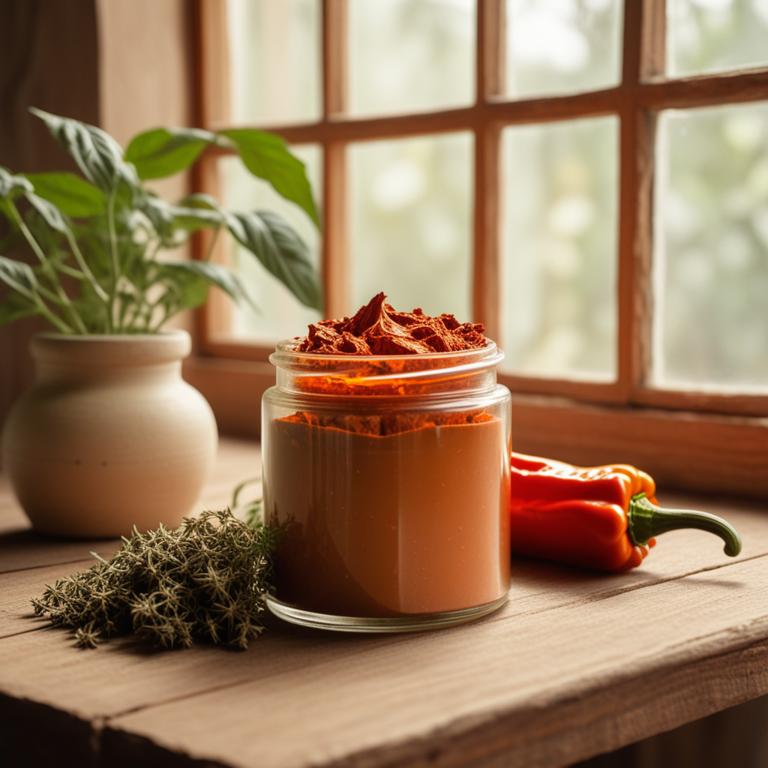
Capsicum annuum creams contains capsaicinoids, which are the active constituents responsible for its pain-relieving properties.
Capsaicin works by blocking the production of a chemical called substance P, which transmits pain signals to the brain. It also increases the production of endorphins, the body's natural painkillers. By reducing inflammation and pain, capsaicin can help alleviate back pain and improve mobility.
The analgesic and anti-inflammatory properties of capsaicin make it a popular natural remedy for back pain relief.
- Gather 1 cup of fresh Capsicum annuum (sweet peppers), 1/2 cup of coconut oil, and 1 tablespoon of beeswax.
- Blend the Capsicum annuum in a blender or food processor until smooth.
- Melt the coconut oil and beeswax in a double boiler or a heat-proof bowl set over a pot of boiling water.
- Add the blended Capsicum annuum to the melted oil and beeswax mixture. Stir well.
- Pour the mixture into a container and let it cool and solidify. Once set, use as a cream for back pain relief.
4. Arnica montana
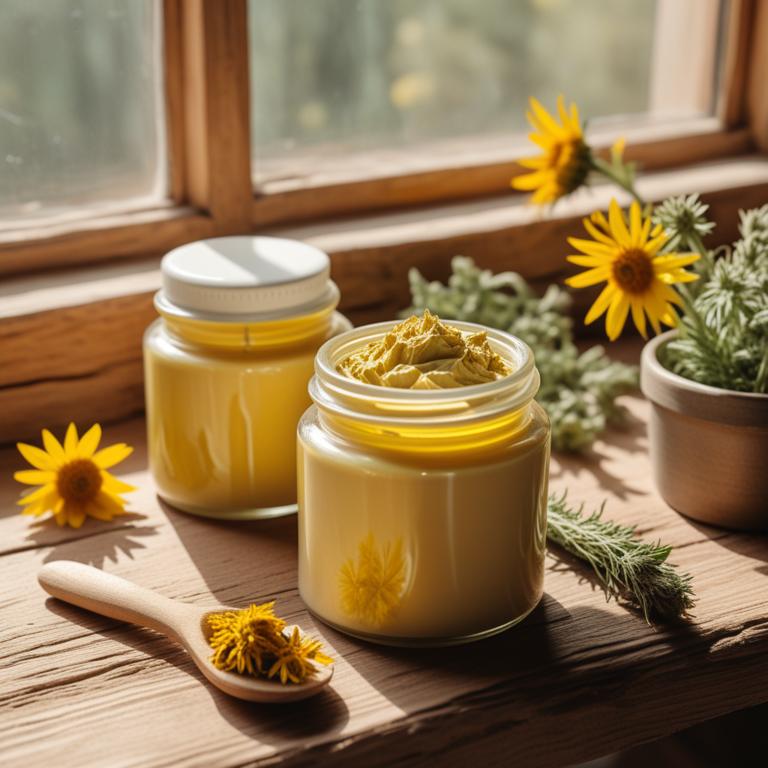
Arnica montana creams contains sesquiterpene lactones, flavonoids, and tannins as its main bioactive constituents.
These compounds have anti-inflammatory and analgesic properties, which help reduce pain and swelling in the back. The sesquiterpene lactones, specifically thapsigargin and herniarin, have been shown to inhibit the production of pro-inflammatory enzymes, thus reducing inflammation. The flavonoids present in Arnica montana creams, such as kaempferol and quercetin, have antioxidant properties that help protect the body from oxidative stress and promote healing.
By reducing inflammation and promoting healing, Arnica montana creams can provide relief from back pain caused by muscle strain and injuries.
- Gather ingredients: 2 cups of coconut oil, 1 cup of beeswax, 2 tablespoons of Arnica montana oil, 2 tablespoons of vitamin E oil, and 10 drops of peppermint essential oil.
- Melt 1 cup of coconut oil and 2 tablespoons of beeswax in a double boiler or a heat-proof bowl set over a pot of simmering water.
- Remove from heat and stir in 2 tablespoons of Arnica montana oil, 2 tablespoons of vitamin E oil, and 10 drops of peppermint essential oil.
- Pour the mixture into a mold or a container. Let it cool and harden completely.
- Once set, remove from mold and store in an airtight container. Apply a small amount to the affected area as needed for back pain relief.
5. Eucalyptus globulus
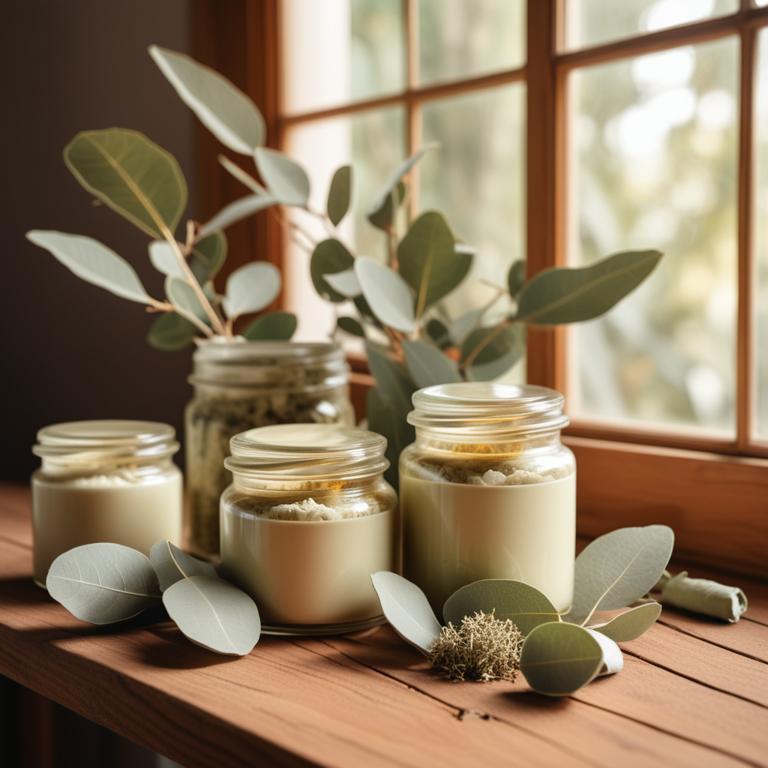
Eucalyptus globulus creams contains compounds like eucalyptol, borneol, and alpha-pinene, which are responsible for its pain-relieving properties.
These bioactive constituents have anti-inflammatory and analgesic effects, making them useful for reducing pain and swelling. Eucalyptol, in particular, has been shown to block pain pathways in the nervous system, while borneol and alpha-pinene have antioxidant properties that help reduce muscle tension and inflammation. The anti-inflammatory properties of these compounds help to reduce pain and discomfort associated with back pain, making Eucalyptus globulus creams a popular remedy for this condition.
By reducing inflammation and relaxing muscles, Eucalyptus globulus creams can help to alleviate back pain and promote a sense of relief.
- Gather ingredients: 1 cup of beeswax, 1/2 cup of coconut oil, 1/4 cup of shea butter, 2 tablespoons of eucalyptus essential oil.
- Melt the beeswax, coconut oil, and shea butter in a double boiler or a heat-proof bowl over a pot of simmering water.
- Once melted, remove from heat and add 2 tablespoons of eucalyptus essential oil. Stir well.
- Pour the mixture into a container and let it cool and solidify. This may take about 30 minutes.
- Once set, your eucalyptus cream is ready to use. Apply to the affected area and massage gently for relief from back pain.
6. Glycyrrhiza glabra
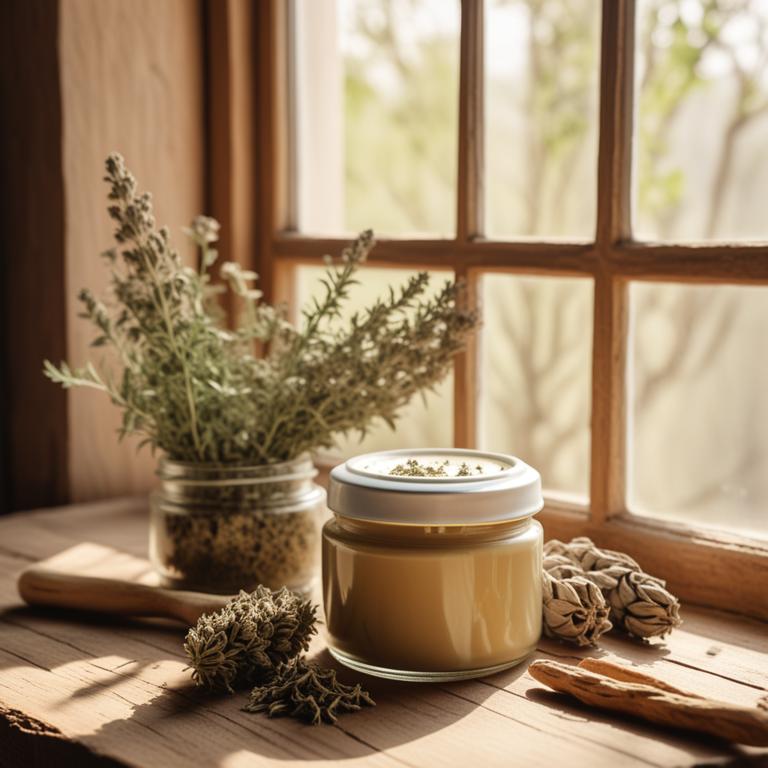
Glycyrrhiza glabra creams contains the boiactive constituents glycyrrhizin, flavonoids, and triterpenoids.
Glycyrrhizin has anti-inflammatory properties that help reduce swelling and pain in the muscles and joints. The flavonoids, including licoricidin and licorisoflavan A, have antioxidant properties that help protect the body from damage caused by free radicals. The triterpenoids, such as glycyrrhetic acid, have anti-inflammatory and antispasmodic properties that help relax muscles and reduce pain.
By combining these properties, Glycyrrhiza glabra creams may provide relief from back pain by reducing inflammation and relaxing the muscles.
- Gather ingredients: 1 cup distilled water, 1/2 cup glycerin, 2 tablespoons glycyrrhiza glabra root powder, 2 tablespoons beeswax, 2 tablespoons coconut oil, 1 teaspoon vitamin E oil.
- Mix 1 cup distilled water with 1/2 cup glycerin in a saucepan. Heat on low heat until glycerin dissolves.
- In a separate bowl, mix 2 tablespoons glycyrrhiza glabra root powder, 2 tablespoons beeswax, and 2 tablespoons coconut oil until well combined.
- Slowly add the dry mixture to the saucepan with the glycerin mixture. Stir constantly until the mixture thickens.
- Remove from heat and add 1 teaspoon vitamin E oil. Pour the mixture into a container and let it cool before applying to the affected area.
7. Aloe barbadensis

Aloe barbadensis creams contains bioactive constituents like aloin, aloe-emodin, and acemannan.
These compounds have anti-inflammatory and analgesic properties, which help reduce swelling and relieve pain in the back. The gel in aloe barbadensis creams also contains vitamins A, C, and E, as well as minerals like calcium and potassium, which promote relaxation and reduce muscle tension. The anti-inflammatory properties of aloe-emodin and aloin can help reduce inflammation in the muscles and joints, which is often a cause of back pain.
The soothing and calming properties of aloe barbadensis creams can also help relax the muscles and improve blood circulation, reducing pain and stiffness in the back.
- Gather ingredients: 1 cup Aloe barbadensis gel, 1/4 cup coconut oil, 2 tablespoons beeswax, 2 tablespoons shea butter, 10 drops of lavender essential oil.
- Melt coconut oil and beeswax in a double boiler or a microwave-safe bowl in 10-second increments until smooth.
- Add shea butter to the melted mixture and stir until combined.
- Stir in Aloe barbadensis gel until well combined with the melted mixture.
- Add lavender essential oil and pour the mixture into a container. Let it cool and solidify before use.
FAQ
Can drinking herbal tea prevent back pain from forming?
Drinking herbal tea may help reduce back pain.
Some teas, like ginger and chamomile, have anti-inflammatory properties that can ease muscle tension and calm the body. These teas can help relax the muscles and reduce pain.
Regularly drinking them may make back pain less likely to form.
Is it safe to consume herbal teas for back pain every day?
Herbal teas for back pain can be a helpful addition to your daily routine, but it's essential to consume them in moderation.
Drinking them every day can be safe, but make sure to choose teas from reputable sources and follow the recommended brewing times.
Some teas, like ginger or chamomile, can be beneficial, but excessive consumption may cause stomach issues.
How long does it take for herbal teas to show results in back pain?
Herbal teas can start to help with back pain after a few days of regular use.
Some people notice a difference within a week, while it may take a couple of weeks for others to feel the effects.
Everyone's body is different, so it's hard to say exactly when you'll notice relief.
Related Articles
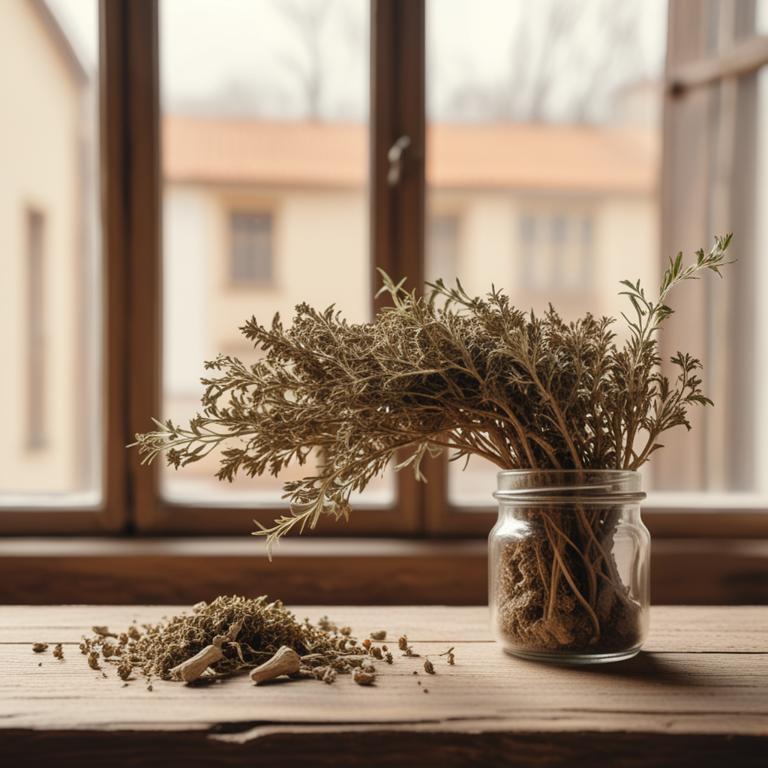
Natural Remedies for Leg Pain: Causes and Herbal Preparations
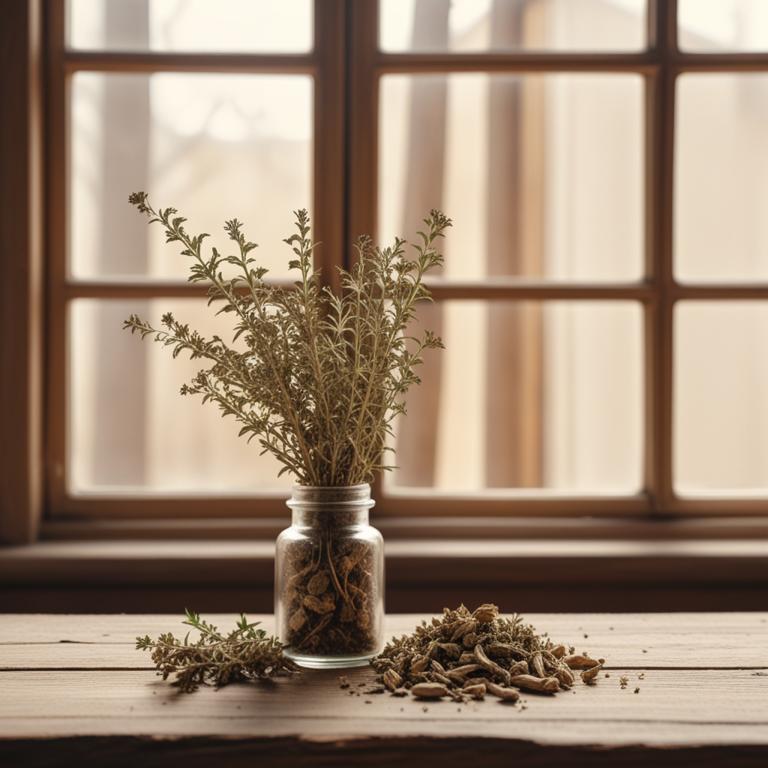
Knee Pain: A Comprehensive Guide to Medical Causes and Herbal Solutions
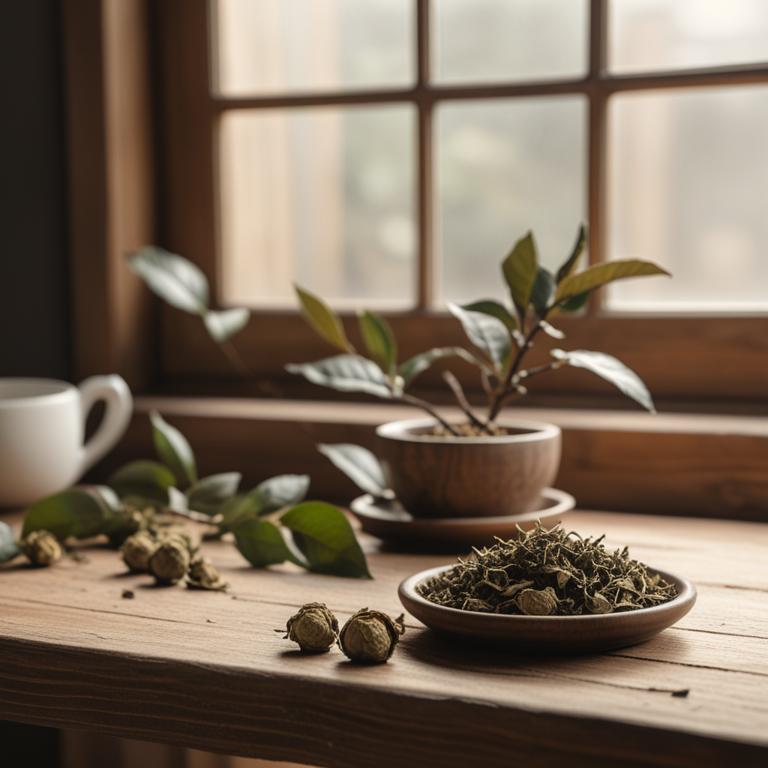
Jaw Pain: Causes, Herbal Remedies, and Homeopathic Preparations
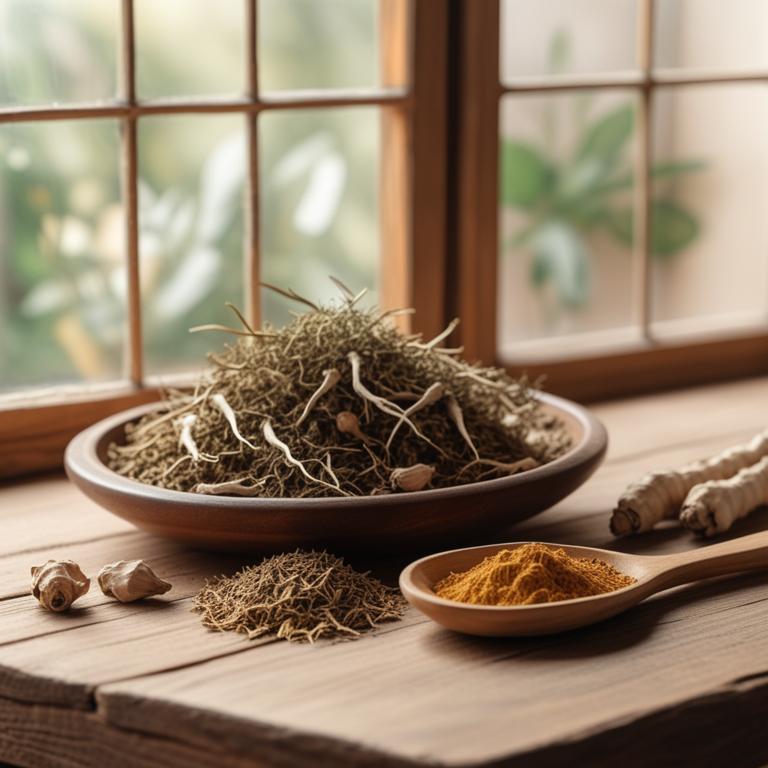
Knee Swelling: A Guide to Medicinal Herbs and Natural Preparations
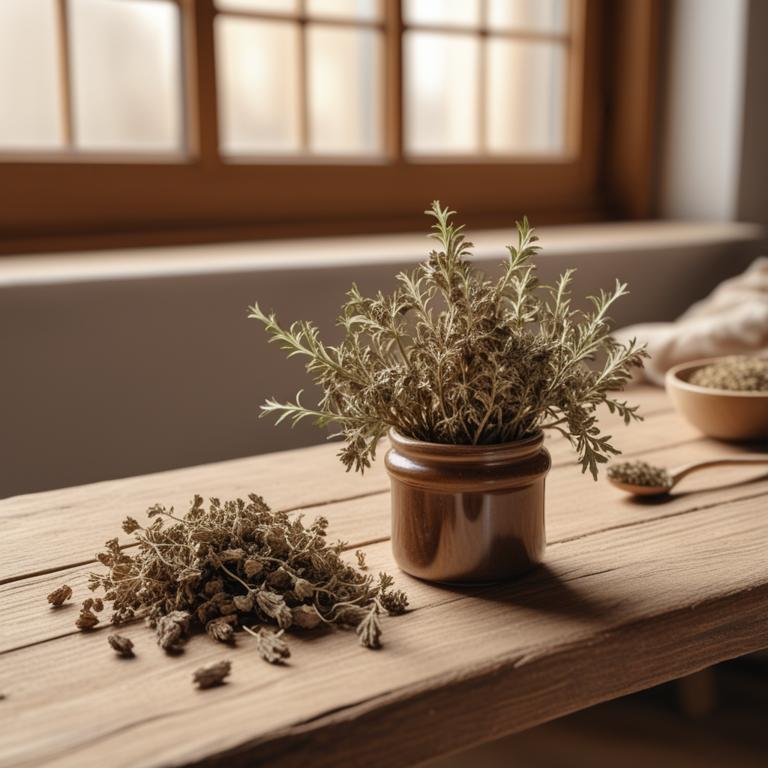
Bone Health: A Comprehensive Guide to Causes and Herbal Preparations
